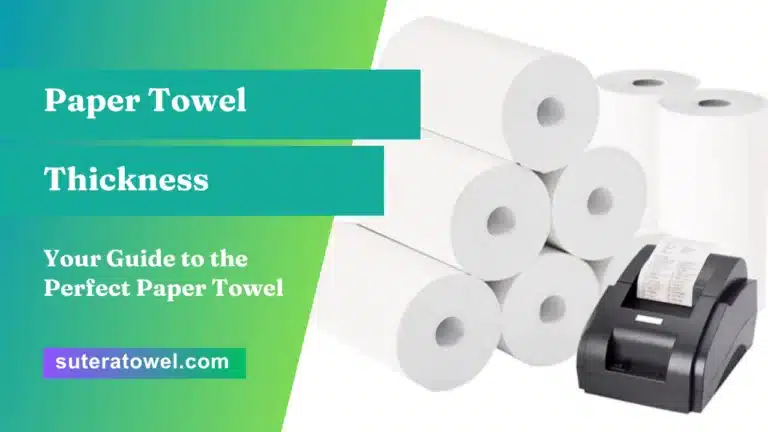Paper towel thickness refers to the measurement of the width or density of the paper used to make the towel. A thicker towel tends to be more absorbent and durable.
In addition, it can also be more effective at cleaning up spills and messes. Having a better understanding of paper towel thickness can help consumers make informed choices when purchasing these products.
- 1 The Science Behind Paper Towel Absorbency
- 2 Factors Influencing Superior Absorbency
- 3 Evaluating Thickness Through Standard Metrics
- 4 Standard Vs. Customized Thickness Requirements
- 5 Advancements In Material Technology
- 6 Exploring Alternative Thinness Strategies
- 7 Frequently Asked Questions On Paper Towel Thickness
- 8 Conclusion
The Science Behind Paper Towel Absorbency
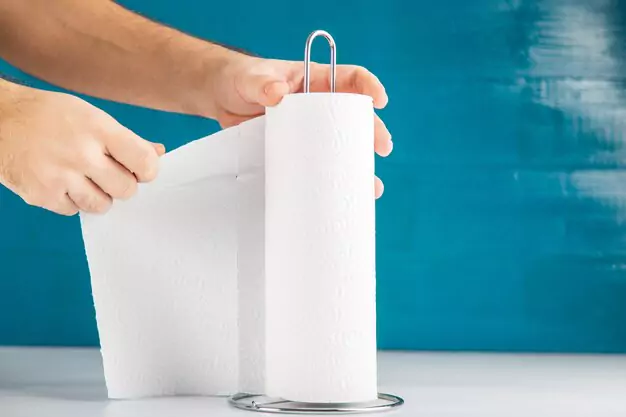
When it comes to household tasks, paper towels are an indispensable tool. From wiping spills to cleaning surfaces, their absorbency is essential for efficient cleaning. Have you ever wondered what makes some paper towels more absorbent than others? In this article, we will delve into the science behind paper towel absorbency, specifically focusing on the impact of thickness. Understanding the relationship between paper towel thickness and absorbency can help you make informed decisions when purchasing this everyday product.
Structure and composition of paper towels
Before we dive into the impact of thickness on absorbency, let’s explore the structure and composition of paper towels. At first glance, they may appear to be simple sheets of paper, but they are more complex. Paper towels are typically made from a combination of pulp fibers, water, and chemicals. The fibers create a network of tiny capillaries that allow the towels to efficiently absorb liquids.
The manufacturing process involves pressing the pulp fibers into a thin sheet, which is then dried and embossed to enhance absorbency. The embossing creates ridges and valleys that increase the surface area of the towel, maximizing its contact with liquids. Additionally, some paper towels have added ingredients, such as binders or softeners, to improve strength and softness.
The impact of thickness on absorbency
Thickness plays a crucial role in determining the absorbency of paper towels. Thicker towels generally have more pulp fibers, which means a larger network of capillaries. This increased number of capillaries allows the towel to hold more liquid, making it more effective at absorbing spills. Thicker paper towels also tend to be stronger and less prone to tearing, ensuring they can withstand vigorous cleaning tasks without falling apart.
It is important to note that while thicker paper towels generally offer enhanced absorbency, there is a limit to this relationship. Beyond a certain thickness, the added fibers do not significantly contribute to absorbency. At that point, the structural integrity of the towel may be compromised, leading to reduced performance.
Research studies on the correlation between thickness and absorbency
To support the correlation between paper towel thickness and absorbency, numerous studies have been conducted. Researchers have measured the absorbency capacity of various paper towel thicknesses using controlled liquid spill tests. These studies consistently demonstrate that thicker towels have a higher absorbency capacity compared to thinner ones.
Moreover, researchers have also examined the impact of different embossing patterns on absorbency. These studies suggest that certain embossing patterns can further enhance the absorbency of paper towels by creating additional surface area and increasing the contact between the towel and the liquid.
While thickness is a significant factor in paper towel absorbency, it’s worth noting that other factors such as fiber quality, composition, and embossing also influence overall performance. Therefore, when selecting paper towels, it is advisable to consider the combination of thickness and these other factors to ensure optimal absorbency and durability.
Factors Influencing Superior Absorbency
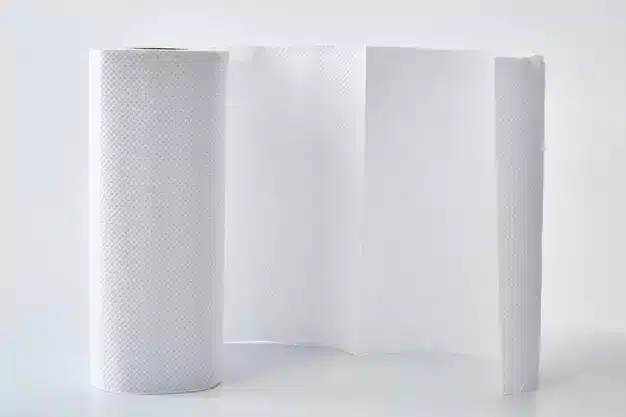
Choosing the right fiber material
When it comes to paper towel thickness, choosing the right fiber material is a crucial factor that influences superior absorbency. Different fiber materials have varying absorbent properties, and selecting the right one can make a significant difference in the effectiveness of the paper towel.
Two common fiber materials used in paper towel production are cellulose and recycled fibers. Cellulose fibers, derived from wood pulp, are known for their excellent absorbency. They have a high water-holding capacity, allowing them to quickly soak up spills and moisture.
On the other hand, recycled fibers, made from post-consumer waste, also exhibit good absorbency. They are more eco-friendly and help reduce the environmental impact of paper towel production. By choosing the right fiber material, you can ensure that your paper towels are not only absorbent but also aligned with your sustainability goals.
The significance of air pockets in thickness
Air pockets play a vital role when it comes to paper towel thickness and absorbency. Paper towels with more air pockets between the layers tend to be thicker and more absorbent. These air pockets act as reservoirs to hold and retain liquid, enabling the paper towel to absorb more effectively.
When a spill occurs, the liquid is quickly drawn into the paper towel due to capillary action. The presence of air pockets allows the absorbed liquid to spread throughout the towel, maximizing its surface area and enhancing absorption.
These air pockets also contribute to the tactile strength of the paper towel, making it more resistant to tearing or disintegrating during use. So, when selecting a paper towel, look for a thickness that indicates a higher number of air pockets, ensuring superior absorbency and durability.
How embossing affects absorbency
Embossing is a technique used to create patterns or textures on paper towels. While it adds aesthetic appeal to the towel, it also plays a role in enhancing absorbency.
The embossed patterns on a paper towel create small valleys and peaks, increasing the surface area of the towel. This increased surface area allows for better contact with liquids, facilitating quicker absorption. The patterns also help to trap and retain liquids within the valleys, preventing them from spreading and leading to more effective drying.
Moreover, embossing enhances the tactile strength of the paper towel, making it more resistant to tearing or tearing apart easily. This ensures that the towel remains intact even when absorbing substantial amounts of liquid. So, when choosing a paper towel, check if it has been embossed to ensure optimal absorbency and durability.
Evaluating Thickness Through Standard Metrics
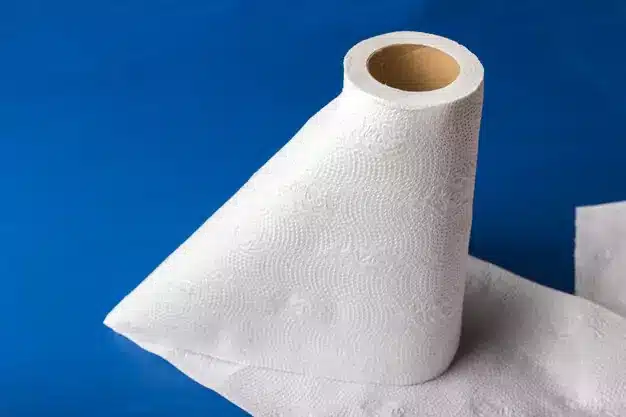
When it comes to choosing the right paper towel for your needs, thickness is an important factor to consider. Not only does it affect the durability and absorbency of the towel, but it also plays a role in its overall quality. However, evaluating thickness can be a challenging task if you don’t know what to look for. In this article, we will explore different thickness measurement methods and discuss the relevance of caliper, bulk, and ply in determining the thickness of a paper towel.
Overview of different thickness measurement methods
When evaluating the thickness of a paper towel, various measurement methods can be used. These methods provide standardized metrics to assess the thickness and performance of the towel. Here are three commonly used methods:
- Caliper measurement: The caliper measurement method involves using a micrometer to measure the thickness of the paper towel. This method provides an accurate and precise measurement, allowing manufacturers to determine the thickness of each towel layer.
- Bulk measurement: Bulk refers to the thickness of a paper towel when it is compressed under a specific pressure. This measurement method helps determine how much air the towel can hold and how well it can absorb liquid. A higher bulk value indicates a thicker and more absorbent paper towel.
- Ply measurement: Ply refers to the number of layers in a paper towel. It is a common way to describe the thickness and quality of the towel. A higher ply count typically indicates a thicker and more durable towel.
Understanding the relevance of caliper, bulk, and ply
Caliper, bulk, and ply are all important metrics when it comes to evaluating the thickness of a paper towel. Each metric provides valuable information about the towel’s performance and quality.
Caliper measurement allows manufacturers to ensure consistency in the thickness of each towel layer. This ensures that the towel has a uniform thickness, making it easier to handle, tear, and use effectively.
Bulk measurement helps determine the absorbency and absorbent capacity of the paper towel. A higher bulk value indicates that the towel can hold more liquid, making it more effective at cleaning up spills and messes.
Ply measurement is an indicator of the overall thickness and strength of the paper towel. A higher ply count means that the towel is thicker and less likely to tear or break during use. This makes it more durable and suitable for heavier cleaning tasks.
By considering the caliper, bulk, and ply of a paper towel, you can make an informed decision when choosing the right towel for your needs. Whether you’re looking for a towel with superior absorbency or one that can withstand tough cleaning jobs, understanding these standard metrics will help you find the perfect thickness that meets your requirements.
Standard Vs. Customized Thickness Requirements
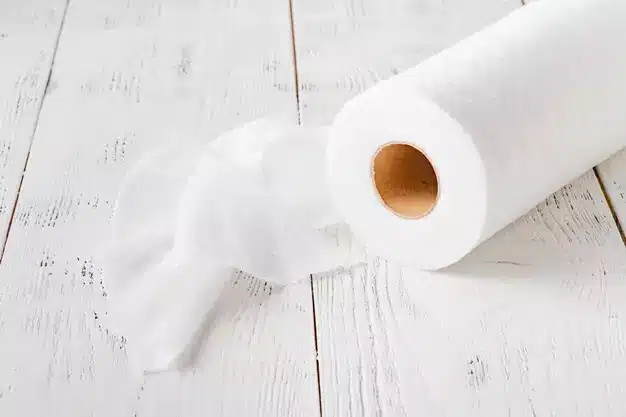
In the world of paper towels, one size doesn’t fit all. Different industries and applications require specific thickness requirements to ensure optimal performance. While there are industry guidelines for paper towel thickness, companies also have the flexibility to customize their paper towel thickness to meet their unique needs.
Industry guidelines for paper towel thickness
When it comes to paper towel thickness, various industries have established guidelines to maintain consistency and quality. These guidelines take into account the intended purpose of the paper towel and the expected level of absorbency or durability. Following these industry standards is crucial to ensure that paper towels meet the expectations of customers and provide reliable performance.
Assessing the needs of different applications
Every application requires a different level of thickness in a paper towel. For example, in a medical setting where hygienic measures are paramount, a thicker paper towel may be required to effectively absorb and contain spills or bodily fluids. On the other hand, in a restaurant setting where efficiency is key, a slightly thinner paper towel might be sufficient for quick cleanups.
Understanding the specific needs of different applications allows companies to tailor their paper towel thickness accordingly. By assessing factors such as usage frequency, intended purpose, and preferred level of absorbency, businesses can optimize their paper towel offerings to cater to their target audience’s requirements.
Customized thickness solutions for enhanced performance
Customization is the key to unlocking the full potential of paper towels. By collaborating with manufacturers and leveraging their expertise, businesses can create customized thickness solutions that deliver enhanced performance.
One way to achieve customized thickness is through layering techniques. By strategically layering multiple sheets of paper towels, companies can create a thicker and more sturdy product that can handle heavy-duty tasks. This approach allows businesses to maintain the desired thickness without sacrificing quality.
Another option is to adjust the raw material used in paper towel production. By selecting different types of fibers or altering the manufacturing process, companies can achieve variations in thickness while still meeting industry guidelines. This flexibility helps businesses address specific customer demands and gain a competitive edge in the market.
In conclusion, both industry guidelines and customized thickness solutions play a vital role in the world of paper towels. By adhering to industry standards, companies ensure that their products meet quality expectations. Simultaneously, customization allows businesses to tailor paper towels to the specific needs of various applications, opening doors to enhanced performance and customer satisfaction.
Advancements In Material Technology
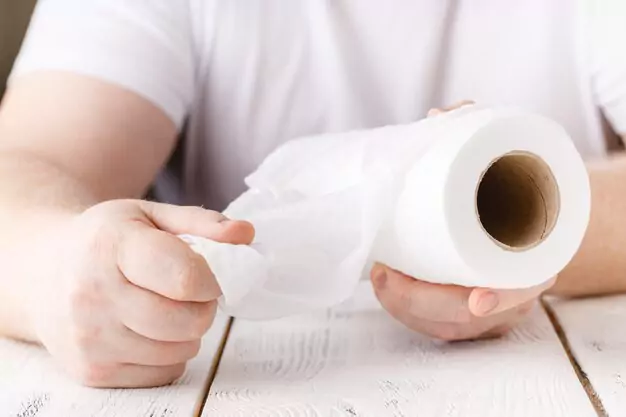
As our understanding of material science continues to evolve, there have been remarkable advancements in the field of paper towel manufacturing. These advancements have led to the creation of paper towels with different thicknesses, each offering specific benefits and advantages for various applications. In this section, we will explore the role of material technology in paper towel thickness, with a focus on three key areas: the introduction of hybrid fibers, the role of nanotechnology, and the impact of synthetic materials on absorbency.
Introduction of hybrid fibers
One of the most significant advancements in paper towel technology is the introduction of hybrid fibers. These innovative fibers combine the strengths of different materials, resulting in a paper towel that is both strong and absorbent. By blending natural cellulose fibers with synthetic fibers, manufacturers have been able to create a product that offers the best of both worlds. The natural fibers provide strength and durability, while the synthetic fibers enhance absorbency and softness.
This combination of materials allows the paper towel to effectively absorb liquids while maintaining its structural integrity. The hybrid fibers also contribute to the overall thickness and density of the paper towel, ensuring a robust and reliable product that can tackle even the toughest spills.
The role of nanotechnology
In recent years, nanotechnology has played a crucial role in the development of advanced paper towel materials. Nanofibers, which are ultrafine fibers with diameters on the nanometer scale, have been incorporated into paper towel production processes. These nanofibers significantly increase the surface area of the paper towel, enhancing its ability to absorb liquids.
The introduction of nanofibers has revolutionized the absorbency capabilities of paper towels. These tiny fibers create a network of microscopic channels, or capillaries, that efficiently trap and retain liquid. As a result, paper towels with nanofibers can quickly absorb large amounts of liquid, making them ideal for cleaning up spills and messes.
Synthetic materials and their impact on absorbency
Advancements in material technology have also led to the use of synthetic materials in paper towel manufacturing. Synthetic fibers, such as polyester or rayon, can be engineered to have specific absorbent properties. These fibers are often added to paper towel formulations to enhance absorbency and make them more effective at soaking up liquid.
The introduction of synthetic materials has allowed manufacturers to customize the absorbent properties of paper towels to meet specific needs. By carefully selecting the right combination of natural and synthetic fibers, manufacturers can create a paper towel with optimal absorbency for different applications. Whether it’s mopping up spills in the kitchen or cleaning surfaces in a professional setting, the use of synthetic materials ensures that paper towels are up to the task.
In conclusion, advancements in material technology have played a pivotal role in the development of paper towel thickness. The introduction of hybrid fibers, the utilization of nanotechnology, and the incorporation of synthetic materials have all contributed to creating paper towels that are not only thicker but also more absorbent. These technological advancements have revolutionized the way we clean and tackle daily messes, making paper towels an essential tool in our everyday lives.
Exploring Alternative Thinness Strategies
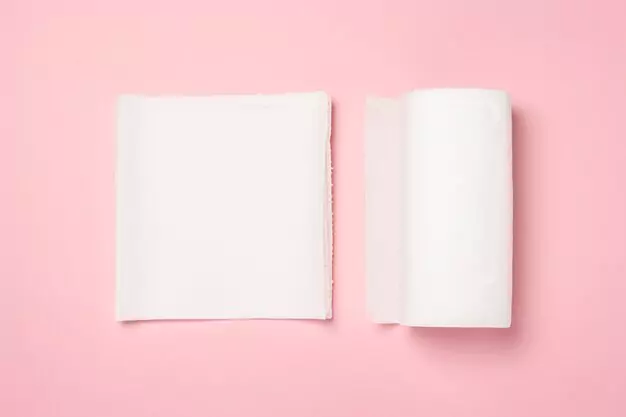
Micro-embossing techniques
One of the leading strategies in the quest for thinner paper towels is through the implementation of micro-embossing techniques. This innovative approach involves creating tiny, shallow indentations on the surface of the paper towel, allowing it to maintain strength and durability while reducing its overall thickness. Micro-embossing offers several advantages over traditional paper towels, such as increased absorbency and improved texture for better cleaning performance.
By employing specialized machinery, manufacturers can create intricate patterns of micro-embossing that maximize the towel’s softness and strength. These patterns help the paper towel maintain its shape when wet and provide enhanced scrubbing capabilities to tackle tough messes effectively. Moreover, micro-embossing techniques contribute to reducing lint and improving overall hygiene, making these paper towels a preferred choice for consumers seeking superior thinness without compromising on performance.
Nanofiber-based paper towels
As technology continues to advance, researchers have explored the use of nanofiber-based materials in the production of paper towels. Nanofibers are ultrafine fibers, typically measuring less than 100 nanometers in diameter, that offer unique properties such as high strength, increased surface area, and excellent absorbency.
Nanofiber-based paper towels provide exceptional thinness due to the small size of the fibers used in their construction. This allows for a densely packed structure that contributes to higher absorbency and improved water retention capabilities. Additionally, the reduced thickness of nanofiber-based paper towels promotes quick drying, minimizing the risk of bacterial growth and unpleasant odors.
Furthermore, nanofiber-based paper towels are often produced using sustainable materials and eco-friendly manufacturing processes, aligning with the increasing demand for environmentally conscious products. This combination of thinness, absorbency, and sustainability makes nanofiber-based paper towels an attractive option for consumers who prioritize both performance and environmental impact.
The trade-off between thinness and absorbency
While exploring alternative thinness strategies in the development of paper towels, it is essential to consider the trade-off between thinness and absorbency. While thinner towels offer convenience and ease of use, their ability to absorb moisture effectively may be reduced compared to their thicker counterparts.
Manufacturers must strike a delicate balance between thinness and absorbency to meet the diverse needs of consumers. This involves carefully selecting materials, optimizing manufacturing processes, and considering the specific applications for which the paper towels will be used.
By understanding the trade-off between thinness and absorbency, manufacturers can ensure that their paper towels deliver optimal performance. Whether it be for quick cleanups or heavy-duty tasks, striking the right balance ensures that consumers can confidently rely on their paper towels to absorb moisture, tackle spills, and maintain cleanliness effectively.
Frequently Asked Questions On Paper Towel Thickness
How Does The Thickness Of Paper Towels Affect Absorbency?
Absorbency is directly affected by the thickness of paper towels. Thicker towels have more fibers, allowing them to absorb more liquid and withstand heavy-duty cleaning tasks.
Are Thicker Paper Towels Better Than Thinner Ones?
Thicker paper towels are generally better than thinner ones as they offer greater durability, absorbency, and strength. Thicker towels can handle spills, wet surfaces, and tough cleaning jobs more effectively.
Can I Use Thicker Paper Towels For Everyday Cleaning?
Yes, you can use thicker paper towels for everyday cleaning. They are versatile and suitable for various cleaning tasks, including wiping countertops, spills, and general household cleaning.
How Does The Thickness Of Paper Towels Impact Their Durability?
Thicker paper towels tend to be more durable due to their increased number of fibers. This allows them to hold up better under pressure and withstand rigorous cleaning without tearing or falling apart easily.
Conclusion
The thickness of paper towels plays a vital role in their absorbency and strength. By understanding the different thickness options available, you can make an informed decision when purchasing paper towels for your household needs. Whether you prefer a thicker option for heavy-duty tasks or a thinner one for everyday use, consider the specific requirements of each cleaning task to ensure optimal performance.
